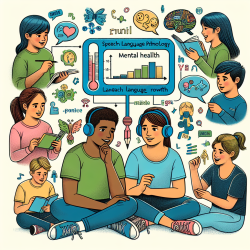Implementing Research Findings to Improve Online Therapy for Children with Autism

The COVID-19 pandemic has brought significant challenges to families and children with autism. Recent research titled "Psychosocial and Behavioral Effects of the COVID-19 Pandemic on Children and Adolescents with Autism and Their Families: Overview of the Literature and Initial Data from a Multinational Online Survey" offers critical insights that practitioners can use to enhance their online therapy services. This blog explores key findings and provides actionable strategies to implement these insights effectively.
Understanding the Impact of COVID-19 on Children with Autism
The study highlights several psychosocial and behavioral effects of the pandemic on children with autism, including:
- Increased anxiety and stress levels
- Disrupted routines and reduced adaptability
- Changes in emotional and social functioning
Strategies for Practitioners
Based on these findings, practitioners can adopt the following strategies to improve outcomes for children with autism through online therapy:
1. Establish Structured Routines
The research underscores the importance of maintaining structured routines to mitigate anxiety and improve adaptability. Practitioners should:
- Develop consistent schedules for therapy sessions
- Incorporate visual schedules and reminders
- Work with families to establish daily routines that include regular breaks and activities
2. Enhance Emotional and Social Functioning
To address the declines in emotional and social functioning, practitioners can:
- Use social stories and role-playing exercises to teach coping strategies
- Implement group therapy sessions to foster social interaction
- Encourage the use of digital platforms for peer interaction
3. Utilize Telehealth Effectively
Telehealth has become a crucial tool during the pandemic. To maximize its effectiveness, practitioners should:
- Ensure that telehealth platforms are user-friendly and accessible
- Provide training for parents to facilitate home-based interventions
- Incorporate interactive and engaging activities to maintain the child’s interest
Encouraging Further Research
While the study provides valuable insights, it also highlights the need for further research in several areas, such as:
- Longitudinal studies to assess the long-term impact of the pandemic on children with autism
- Comparative studies across different countries and cultural contexts
- Research on the effectiveness of various telehealth interventions
Practitioners are encouraged to stay updated with ongoing research and integrate new findings into their practice to continually improve outcomes for children with autism.
Conclusion
The COVID-19 pandemic has presented unprecedented challenges, but it has also spurred innovations in telehealth and online therapy. By implementing research-driven strategies, practitioners can enhance their services and support the well-being of children with autism and their families.To read the original research paper, please follow this link:
Psychosocial and Behavioral Effects of the COVID-19 Pandemic on Children and Adolescents with Autism and Their Families: Overview of the Literature and Initial Data from a Multinational Online Survey.
Citation: Kreysa, H., Schneider, D., Kowallik, A. E., Dastgheib, S. S., Dogdu, C., Kühn, G., Ruttloff, J. M., Schweinberger, S. R. (2022). Psychosocial and Behavioral Effects of the COVID-19 Pandemic on Children and Adolescents with Autism and Their Families: Overview of the Literature and Initial Data from a Multinational Online Survey. Healthcare, 10(4), 714. https://doi.org/10.3390/healthcare10040714










